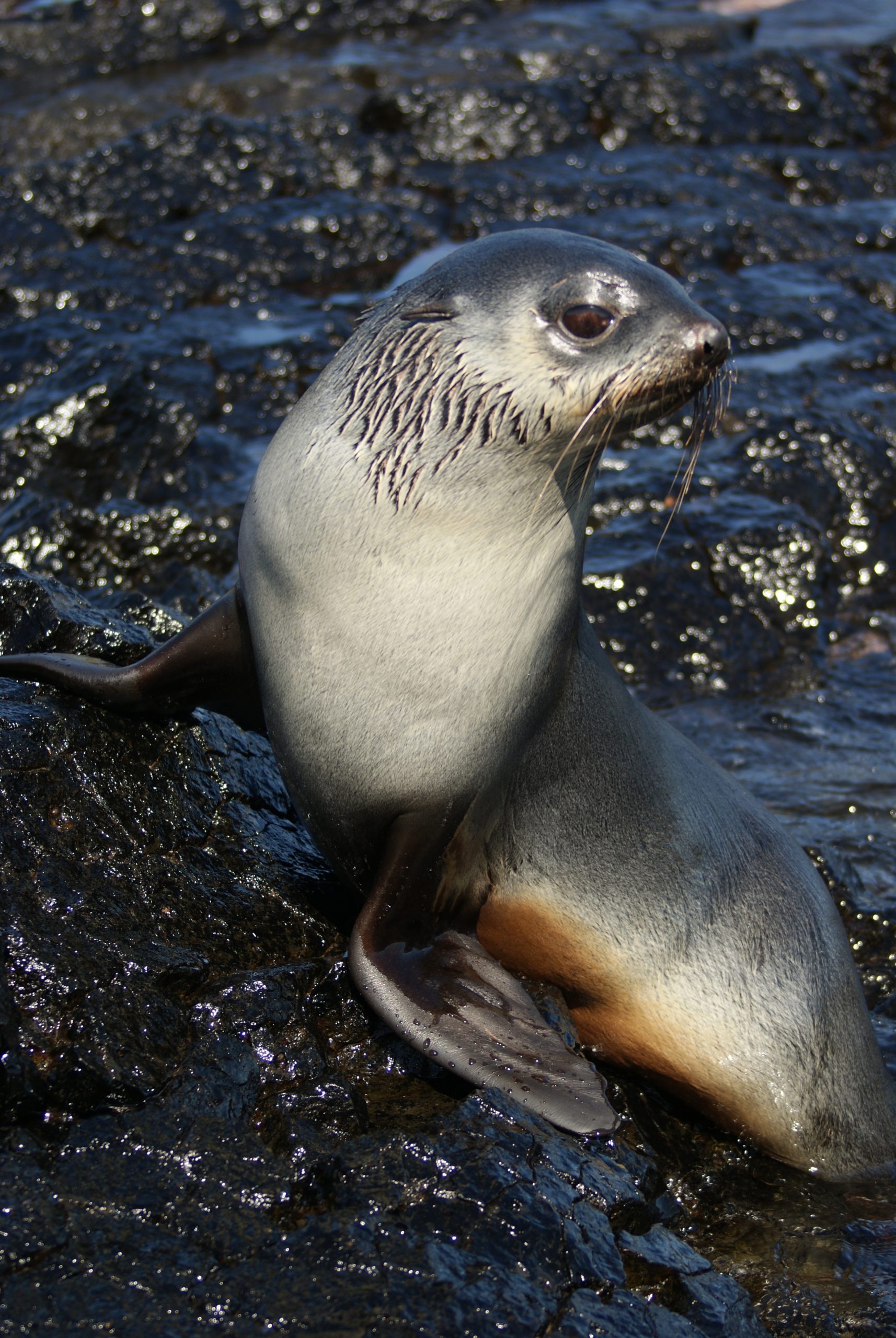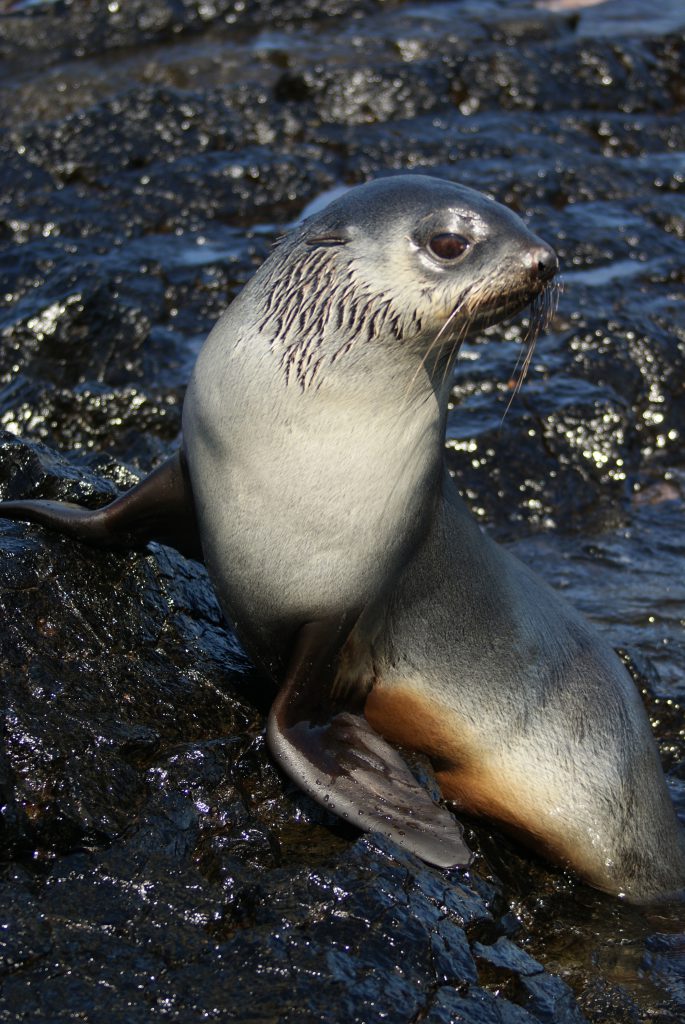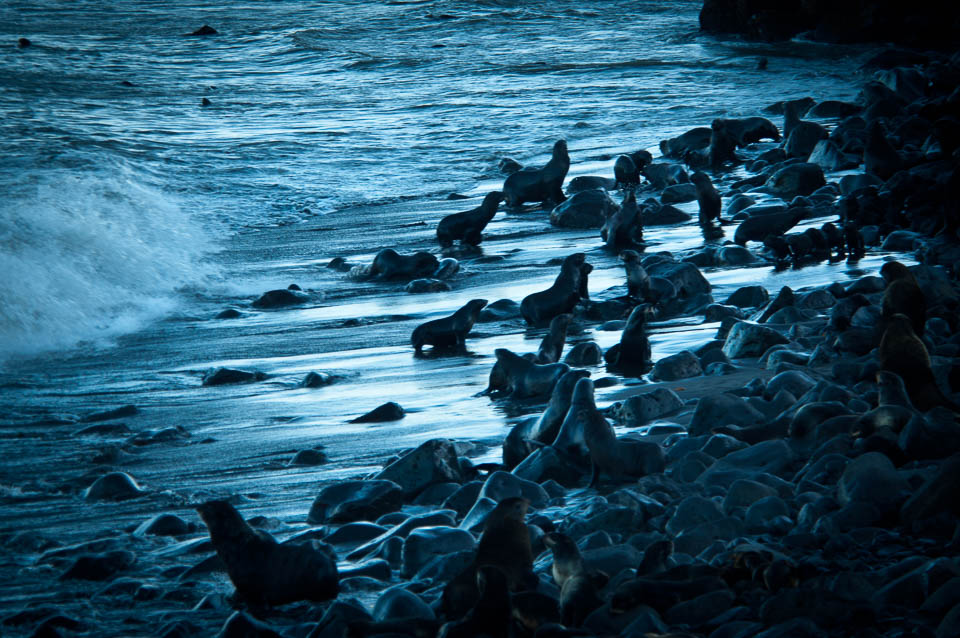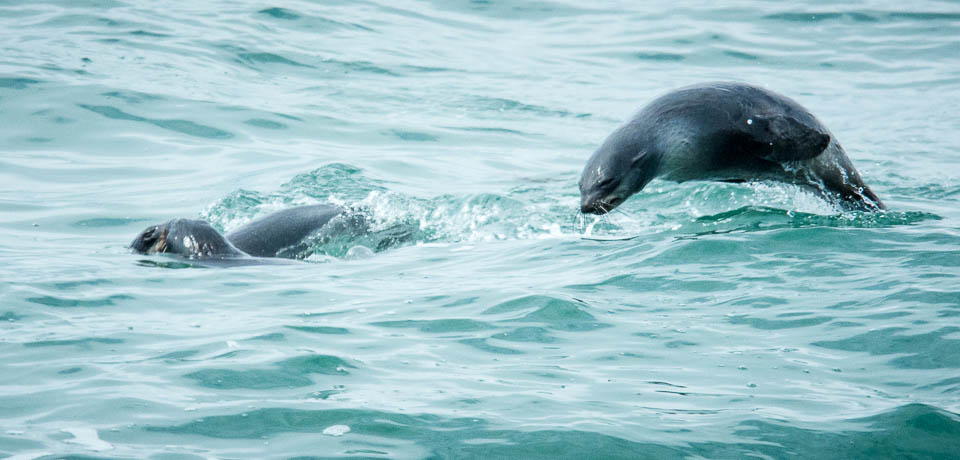

A female Antarctic fur seal on the Kergulen Islands, southern Indian Ocean.
Studying flipper strokes in fur seals gives insights into their energetics
Thanks to small sensors in popular new activity tracking devices like the FitBit, people can now answer questions about their daily lives that used to require a great deal of guesswork. How many steps did I walk or run today? How many calories did I burn given my daily activities? It’s handy information if you’re trying to stay healthy.
Consortium scientists are asking similar questions about marine mammals, and are using devices with similar sensors to find the answers. For example, it is now possible to track the detailed movements of fur seals at sea, and calculate how much energy they expend while diving and swimming using tri-dimensional accelerometers. This information helps to understand how much energy they spend during their daily lives and consequently how much food they need to meet their energetic needs.
Without such devices, it would be impossible to obtain important biometric information about these marine mammals, who range freely over hundreds of kilometers in some of the most remote parts of the oceans. Some of these populations have declined suddenly, and research on energetics helps to understand why.
In a new Consortium study, researchers tracked the movements at sea of two species of fur seals: northern fur seals living in the northern hemisphere, and Antarctic fur seals living in the southern hemisphere. They analyzed flipper strokes to estimate the amount of energy expended during various activities. The study, led by Dr Tiphaine Jeanniard-du-Dot, was published in Nature Scientific Reports.
Different Strokes
“We set out to answer two questions,” says Jeanniard-du-Dot, who completed the study as part of her PhD research. “First, can we identify flipper strokes in the acceleration signals recorded by the devices? And second, can we predict energy expenditures by counting the flipper strokes in both species of fur seal, over a wide range of behaviors at sea?”

Northern fur seals returning to shore on the Pribilof Islands, Alaska.
Fur seals at sea spend most of their time diving, swimming slightly below the surface, or resting at the surface, says Jeanniard-du-Dot. Each flipper stroke causes a momentary acceleration that is detected and stored in the tracking device. In their analysis, the researchers worked to isolate the animal’s own movements from the background “noise” generated by waves, currents and wind.
“It was easy to detect flipper strokes when the seals were underwater and diving, because there was less noise from wind or waves,” she says. “The signals were less clear when the animals were swimming at or slightly below the surface, but we could still detect them. When the fur seals were moving slowly at the surface, grooming or resting, it was difficult to detect anything at all.”
The scientists were surprised to find some consistency between flipper strokes among the northern fur seals in the Alaskan Bering Sea, and the Antarctic fur seals in the Southern Ocean and Antarctic peninsula. Each species used a similar number of flipper strokes to travel the same distance, had the same swimming rhythm, and expended the same amount of energy. However, while diving the smaller Antarctic fur seals expended slightly more energy to accelerate, likely due to their smaller flipper size.
Analyzing Amplitude
In addition to counting the number of strokes, the scientists also assessed the relative power of each stroke by measuring its amplitude, or intensity.

Fur seals regularly porpoise as they travel in search of food.
“A big flipper stroke generates more acceleration, and requires more energy, than a small flipper stroke,” says Jeanniard-du-Dot. “We found that measuring amplitude was a better predictor of energy expenditure over the whole range of behaviors during an entire foraging trip. If we want to get a better estimate of what is going on overall, we should take amplitude into account and not simply measure the number of flipper strokes.”
As a field biologist, Jeanniard-du-Dot believes that understanding basic energetics is fundamental to estimating what fur seals need to survive and reproduce successfully.
“Just as a person couldn’t run a marathon on a diet of two salads per day, we can’t expect fur seals to thrive in the wild if they aren’t getting the calories they need,” she says. “By using acceleration data to estimate the energy they expend, we are a step closer to understanding how much food they need, and eventually, how best to manage and share the ocean’s resources.”
 PUBLICATION
PUBLICATION
|

|

 |
||||||||||||
